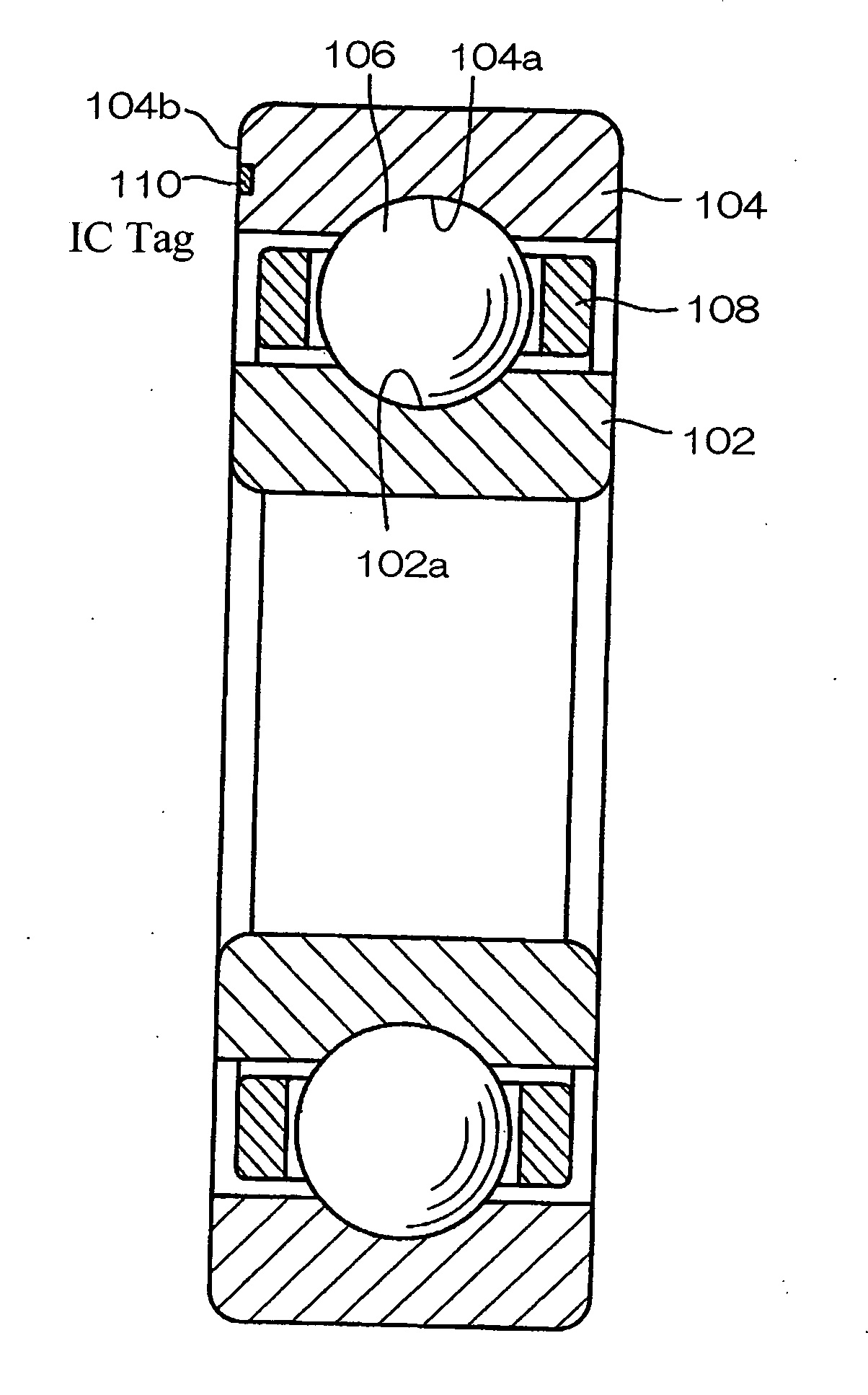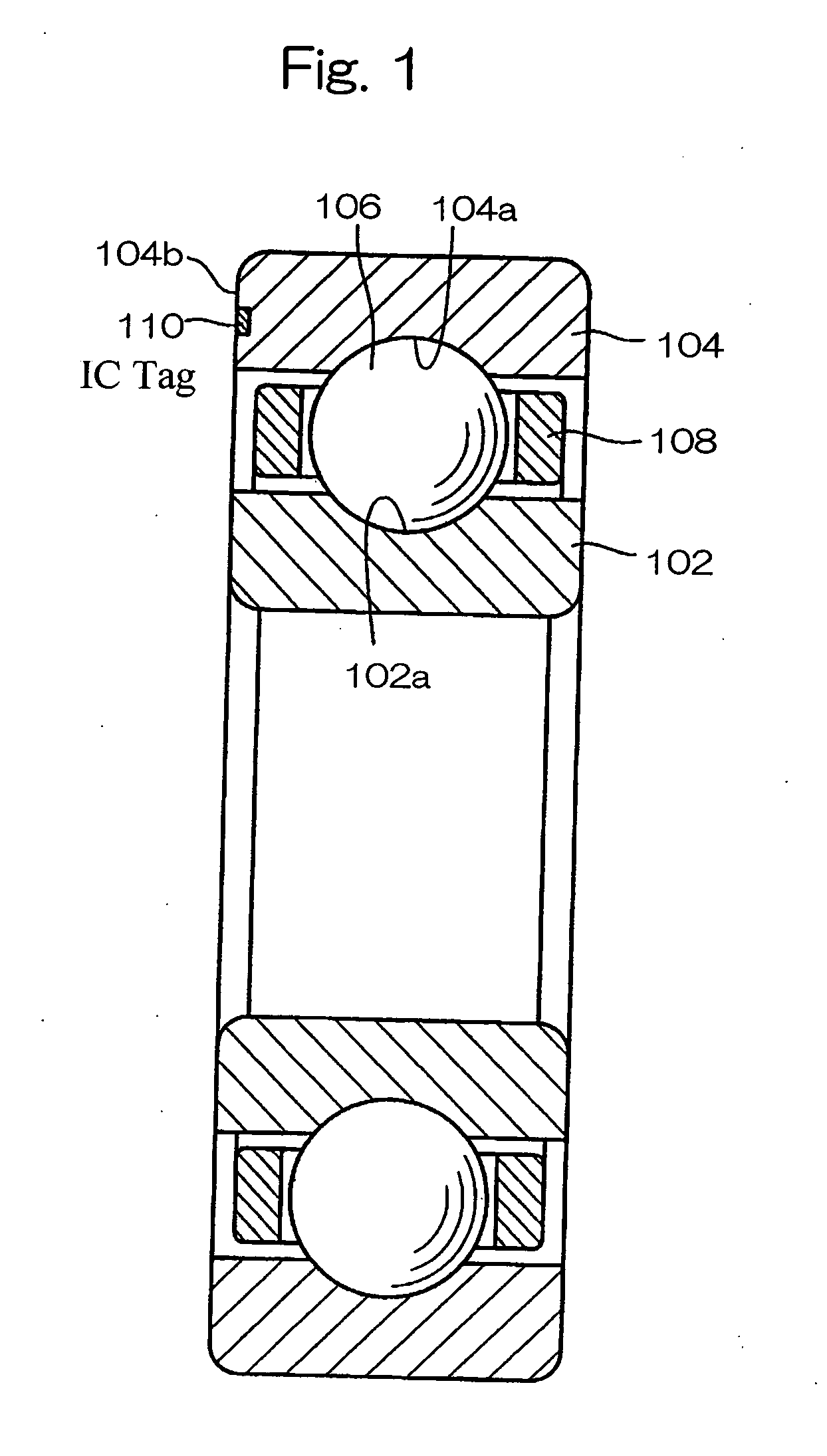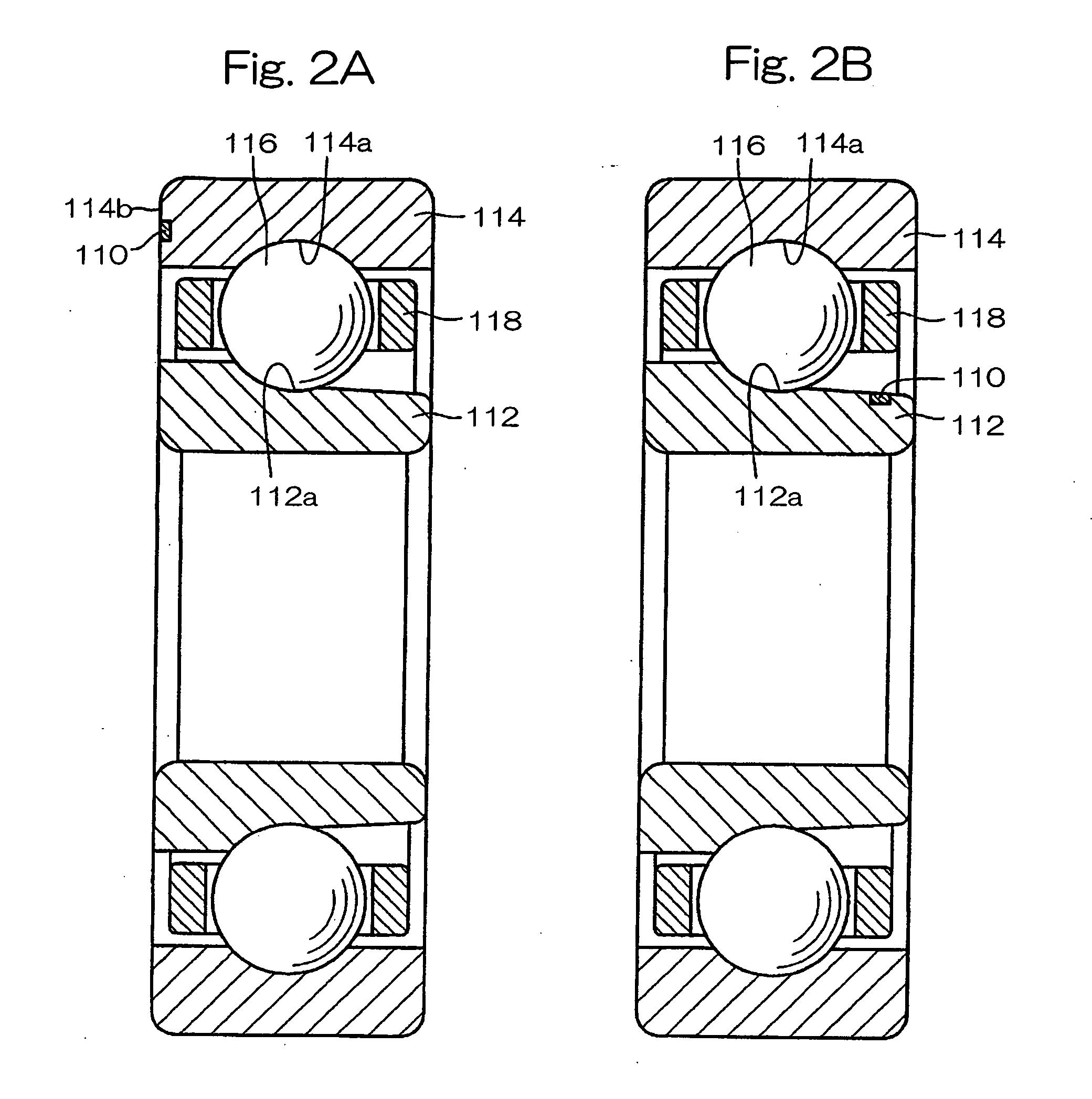Machine component using ic tag and its method for controll quality and system for inspecting abnormality
a technology for machine components and tags, applied in the direction of electric programme control, programme control, total factory control, etc., can solve the problems of ic tag not having ic tag, ic tag being lost, trouble in machine components may not be ascertained, etc., to achieve easy attachment of components, increase manufacturing stages, and the effect of simple components
- Summary
- Abstract
- Description
- Claims
- Application Information
AI Technical Summary
Benefits of technology
Problems solved by technology
Method used
Image
Examples
fourth embodiment
[0141] In the practice of the fourth embodiment, the IC tag 9 is used to contain as many pieces of the manufacturing information as possible and the quality control is performed based on the recorded information. However, in the fifth preferred embodiment of the present invention, a post-shipment control database may be utilized and is generally identified by 10.
fifth embodiment
[0142] Specifically, the database 10 is used to store in association with the identifying information unique to the machine component 1 predetermined manufacturing information on purchase of material, the forging stage, the heat treatment stage, the grinding stage and the examination stage, so that the stored information in the database 10 can be extracted based on the identifying information. The quality control is carried out by the utilization of the database 10 and the IC tag 9 attached to the machine component 1. In this fifth embodiment, the following processing takes place during the steps R1 to 3.
(IC Tag Attaching Step R1)
[0143] This step R1 is substantially identical to that of the fourth embodiment.
(Manufacturing Information Recording Step R2)
[0144] At this step R2, by the time of shipment or delivery to a customer, identifying information of the machine component 1 such as serial number and lot number and manufacturing information on the machine component 1 are recor...
sixth embodiment
[0198] It is to be noted that although in the sixth embodiment the electric power source circuit 205 built in the IC tag 203 is utilized to drive the temperature sensor 204, an electric power source circuit 2052 separate from an electric power source circuit 205, for driving the IC tag 203 may be employed for driving the temperature sensor 204 as shown in FIG. 18. Even this electric power source circuit 2052 is electrically powered by an electric power supplied through the antenna 212. Also, the electric power source circuit 2052 may be provided with a rechargeable battery and a charging circuit 219 (not shown) as shown in FIG. 20.
[0199] Also, the bearing dedicated electronic component 206 may have a vibration sensor 217 as shown in FIG. 19 together with the temperature sensor 204. An output from the vibration sensor 217 is connected to, for example, a predetermined input terminal (not shown) of the IC tag 203. Where the vibration sensor 217 outputs an analog signal, it is inputted ...
PUM
 Login to View More
Login to View More Abstract
Description
Claims
Application Information
 Login to View More
Login to View More - R&D
- Intellectual Property
- Life Sciences
- Materials
- Tech Scout
- Unparalleled Data Quality
- Higher Quality Content
- 60% Fewer Hallucinations
Browse by: Latest US Patents, China's latest patents, Technical Efficacy Thesaurus, Application Domain, Technology Topic, Popular Technical Reports.
© 2025 PatSnap. All rights reserved.Legal|Privacy policy|Modern Slavery Act Transparency Statement|Sitemap|About US| Contact US: help@patsnap.com



